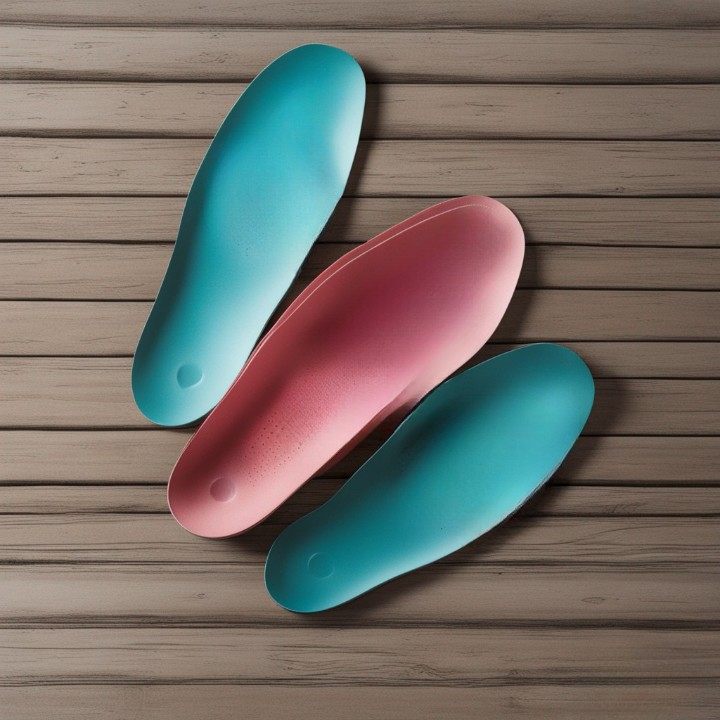Water shoes are specialized footwear designed for activities in and around water. They have thick, grippy soles to prevent slipping on wet surfaces and quick-drying uppers that promote drainage and ventilation. While water shoes provide traction and protection, many people find they still need additional cushioning and support. This is where insoles come in handy.
Insoles are removable inserts that fit inside shoes to improve comfort and fit. For water shoes, they can make a big difference by adding padding, stability, odor control, and other helpful features. In this article, we’ll explore the benefits of insoles for water shoes, the types available, how to choose the right pair, and tips for use and care.
QUICK ANSWER
Based on our research, we recommend the following top 3 insoles for use with water shoes:
- Superfeet GREEN Insoles – Provide excellent arch support and stability.
- Hydrofeet Orthotic Insoles – Cushioning and antimicrobial protection.
- Spenco RX Polysorb Cross Trainer – Shock absorption and odor control.
Why Insoles are Useful for Water Shoes
Insoles serve many purposes that can enhance your experience wearing water shoes:
- Improve Comfort and Fit – Add cushioning and support, especially if you have high arches or other foot issues. Help prevent foot pain, blisters, and fatigue. As we discussed in our article on best water shoes for wide feet, insoles can help accommodate wider feet.
- Support Proper Alignment – Help position the foot correctly and evenly distribute weight for proper posture and biomechanics. Reduce risk of injuries. Our article on best shoes for water aerobics covers how insoles provide needed arch support during water exercise.
- Absorb Impact – Soften steps on hard surfaces to prevent foot strain and pain in ankles, knees, hips, and back. This shock absorption is especially important for activities like kayaking, referenced in our best water shoes for kayaking guide.
- Control Odor & Moisture – Wick away sweat and allow airflow to keep feet cool and dry. Use antimicrobial materials to minimize odors. This helps manage the dampness associated with water shoe use, as covered in our article on how to wash water shoes.
- Accommodate Foot Shape – Provide customized support for flat feet, high arches, and other unique foot shapes that may not work with generic insoles.
Types of Insoles for Water Shoes
There are several types of insoles made for active footwear like water shoes:
Orthotic Insoles
- Designed to support foot alignment and relieve pain
- Often prescribed by podiatrists
- Can be custom-molded or prefabricated
- Materials like foam, gel, cork
Cushioned Insoles
- Focus on shock absorption and softening steps
- Made of foam, gel, or air pockets
- Varying levels of cushioning from minimal to maximum
- Some have moisture-wicking top fabric
Massaging Insoles
- Have raised bumps, ridges, or massage balls
- Stimulate pressure points on feet
- Improve circulation and relieve muscle tension
- Made of rubber, gel, or plastic polymers
Honeycomb Insoles
- Have hexagonal air cell structure
- Absorb impact and allow airflow
- Lightweight and quick-drying
- Provide cushioning and support
Popular options: Superfeet GREEN, Spenco RX, Hydrofeet Orthotic, Powerstep Pinnacle Maxx
How to Choose the Best Insoles
Consider the following factors when selecting insoles for your water shoes:
- Foot Type – Flat, high arch, wide feet, etc. Pick insoles to accommodate your foot shape.
- Activity Level – More cushioning for high-impact water sports like rafting. Orthotics for long hours on your feet.
- Shoe Compatibility – Choose insoles that fit the water shoe without being too tight.
- Needed Support – Extra arch or heel support if you overpronate or have plantar fasciitis.
- Personal Preferences – Opt for antimicrobial, massaging, or other special features you want.
Get your feet measured and try on different insoles to find the best fit and feel. It may take some trial and error. Purchase from reputable footwear and sporting goods stores or specialty online retailers like Superfeet and Spenco. Prescription custom orthotics require a podiatrist visit.
Use and Care Tips
Follow these guidelines to get the most out of your water shoe insoles:
- Insert insoles properly by lining them up with the heel and ball/toes of feet. Trim if needed.
- Allow an adjustment period to break-in insoles gradually. Wear for short periods at first.
- Wash regularly using mild soap and water to prevent odor and growth of bacteria and fungi. Air dry completely.
- Replace insoles every 6-12 months or when they show considerable wear. The cushioning and support decreases over time.
- Bring insoles with you when trying on new water shoes to check fit.
- Avoid sharing insoles between different pairs of water shoes to prevent spreading fungi like athlete’s foot.
Final Thoughts
Adding quality insoles customized for the shape and condition of your feet can greatly improve how water shoes perform. Make sure to select the type that matches your foot type, activities, and preferences. Take the time to get properly measured and fitted. Follow the usage and care tips above so your insoles effectively enhance traction, cushioning, and support for all your wet and wild adventures in water shoes. Let us know if you have any other questions!
